Update: originally posted Nov 10 2024
![]()

![]()
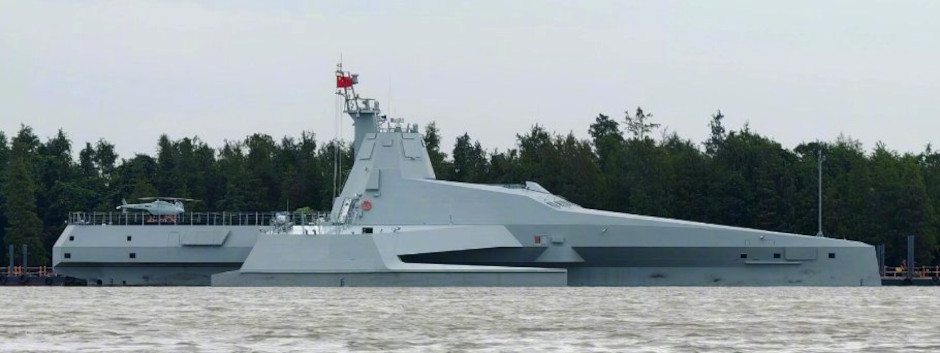
China Builds World's Largest Uncrewed Warship
 The JARI-USV-A Orca (possibly also called 'Killer Tiger'), is a new large uncrewed combat vessel (USV - uncrewed surface vessel) developed in China. The design features a futuristic trimaran hull with a vertical launch system (VLS) for missiles and a helipad for UAVs at the stern. Perhaps more significantly, it features an integrated mast with multiple radar arrays, setting it apart from simpler combat USVs being developed elsewhere.
The JARI-USV-A Orca (possibly also called 'Killer Tiger'), is a new large uncrewed combat vessel (USV - uncrewed surface vessel) developed in China. The design features a futuristic trimaran hull with a vertical launch system (VLS) for missiles and a helipad for UAVs at the stern. Perhaps more significantly, it features an integrated mast with multiple radar arrays, setting it apart from simpler combat USVs being developed elsewhere.
It is also conspicuous for its size, being the largest combat USV in the water with any navy. It is much larger than the U.S. Navy's Sea Hunter and Sea Hawk large 'medium-sized unmanned surface vessels'. It's displacement is almost 3 times more at 420 tons (compared to 145 tons), while is length is 58-60 meters (190-197 feet) versus 40 meters (131 feet). And it is 23 meters (74 feet) across compares to 14 meters (46 feet). The U.S. Navy's 'Ghost Fleet Overlord' test unmanned surface vehicles are about the same length but, being monohull, have a larger displacement at 673 tons. These are not characterized as combatants in the same way as JARI-USV-A unambiguously is.
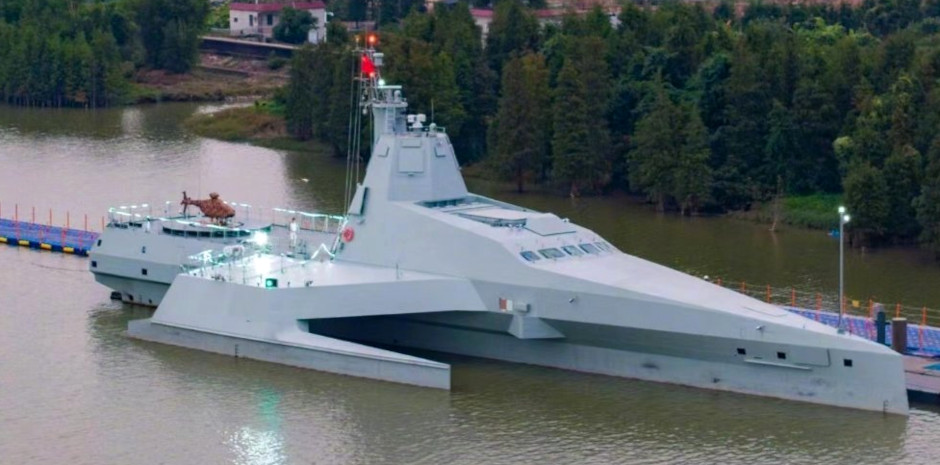
Models of the JARI design have been promoted by CSSC (China State Shipbuilding Corporation) for several years, being shown in Abu Dhabi at NAVDEX 2023. Going back earlier, it was reported in December 2022 that China had started construction of its 'most advanced large unmanned ship'. Developed by No.716 Research Institute of CSSC, this design and description broadly matches the JARI-USV-A. The actual vessel was spotted in the water at Guangzhou Shipyard International (GSI) on Longxue Island in late October by Tom Shugart. The location matches the December 2022 report. Since then numerous photos and videos of the vessel have emerged as it clearly enters into the public arena.
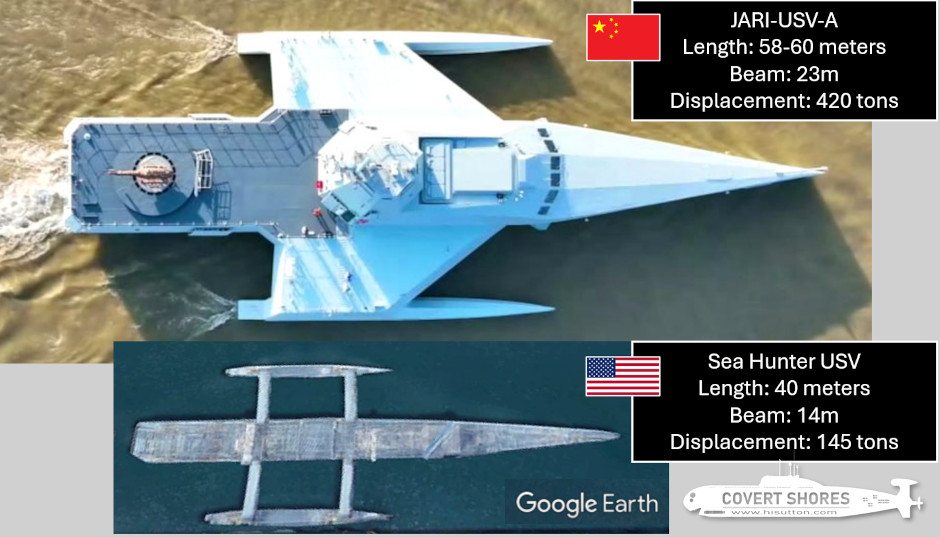
Approximate size comparison with U.S. Navy's Sea Hunter USV
Armament is unclear but it appears to include missiles in the VLS, and torpedo tubes in angled launchers. Based on tradeshow models it is also possible that there is a retractable remote weapon station (RWS) in the foredeck.
There is a small bridge for crewed operations. This is common to other large USVs and makes it much simpler to operate, particularly in port or transiting busy waterways and rivers. It is also simpler to use humans at these times rather than building and testing the automation for this part of its operations. And there will likely be legal and regulatory considerations which may make it preferable to carry a human crew at times.
Specifications
Displacement: 420 tons
Length: 58 m
Beam overall: 23 m
Draft: 2 m
Maximum speed: 40 knots
Range: 4,000 nautical miles
Propulsion: ual-mode diesel-electric
Armament: VLS with 4-12 cells. 2 x lightweight torpedo tubes. 1 x remote weapon station. Also shown with HQ-10 air defense missiles.
Other systems: AESA Radar, helipad for VTOL UAV (e.g. WZ-5B), provision for AUVs.
Significance of the JARI-USV-A
CSSC has previously built and tested the much smaller JARI USV. While similar in some respects, this is much more than a scaled up JARI. Separately CSSC also revealed its 'Thunderer A2000' design which is broadly similar to JARI-USV-A. Another Chinese shipbuilder has also developed a USV roughly similar in overall form to the American Sea Hunter. And there are numerous other, undocumented, USVs under testing in China.
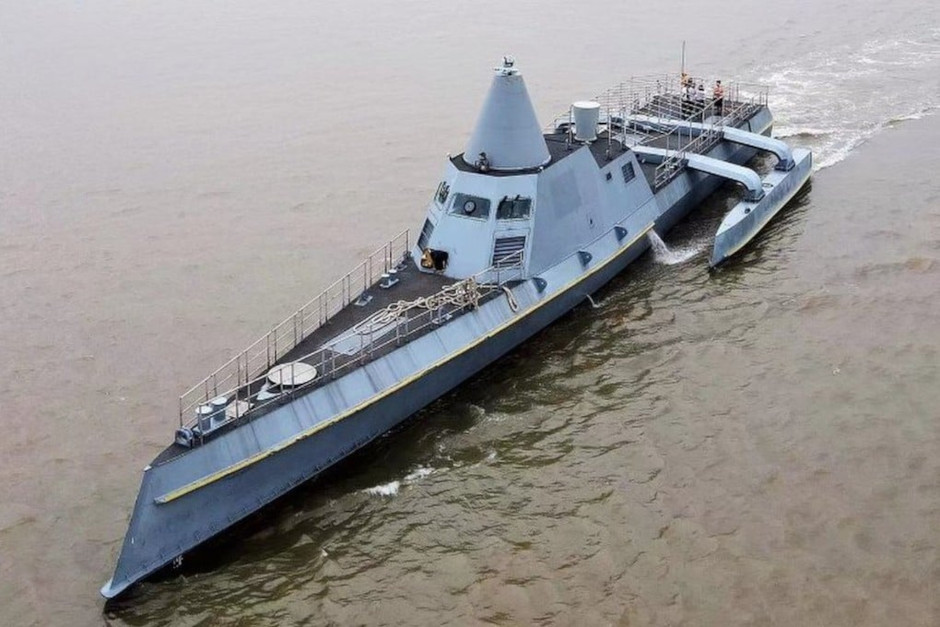
A trimaran design similar to the U.S. Navy's Sea Hunter, but generally more stealthy shaped, was built at Tongfangjiang New Shipyard in Jiangxi Province in 2019.
It is unclear whether any of these projects enjoys real Chinese Navy (PLAN) support. Possibly these, and other cutting edge designs like drone carriers, are speculative projects. The JARI-USV-A's public display matching the Zhuhai Airshow certainly suggests to a commercial project.
Either way it points to a growing willingness of Chinese shipyards to experiment and innovate. While this vessel conforms to some trends in warship design, there is no question that it is a wholly original design. China is the first to build a relatively large uncrewed combatant.
In my view the seemingly sophisticated radar array may be the most significant feature. The exact details are illusive but persistent reporting & rumours suggest that the JARI designs feature AESA radars. This is not far-fetched, although how the data will be processed aboard, and fed into a wider network, is unclear. However it is an obvious direction of travel for naval technology and China is taking a leading role (U.S. Navy experimentation accepted).
I am not convinced that making USVs ever larger and more completely equipped with diverse weapons and sensors is necessarily the best way forward for navies. It drives up cost and at some point the advantage of being uncrewed is lost as it becomes a high-value target itself. But it is undoubtedly something worthy of experimentation, and China is the first.
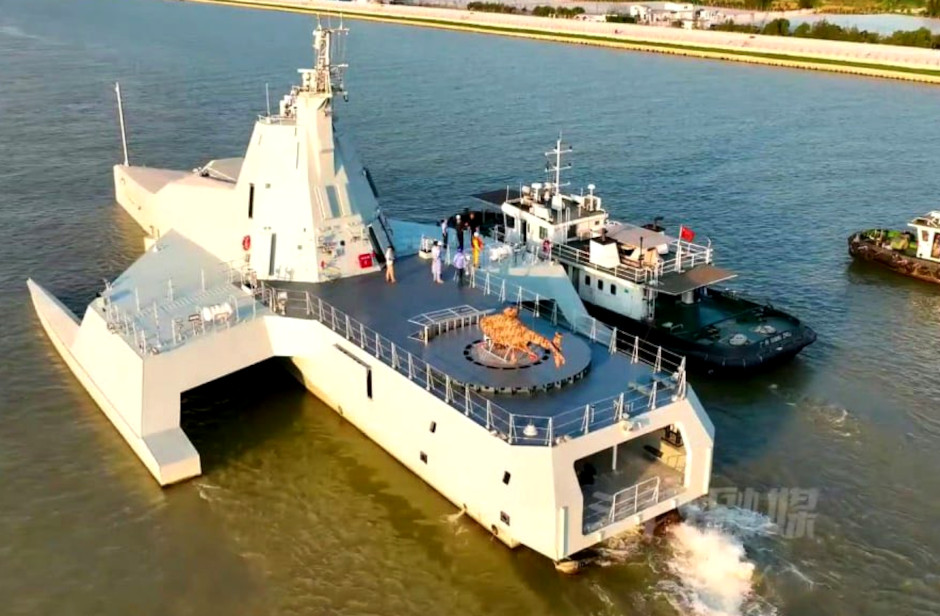
UPDATE - Nov 12 2024
The vessel is being displayed as part of the Zhuhai Airshow, along with an updated manufacturers model. The previously released specifications have been confirmed and expanded upon. Significantly, the model also shows what appears to be an HQ-10 point defense missile system on the aft deck. Small AUVs are also shown.
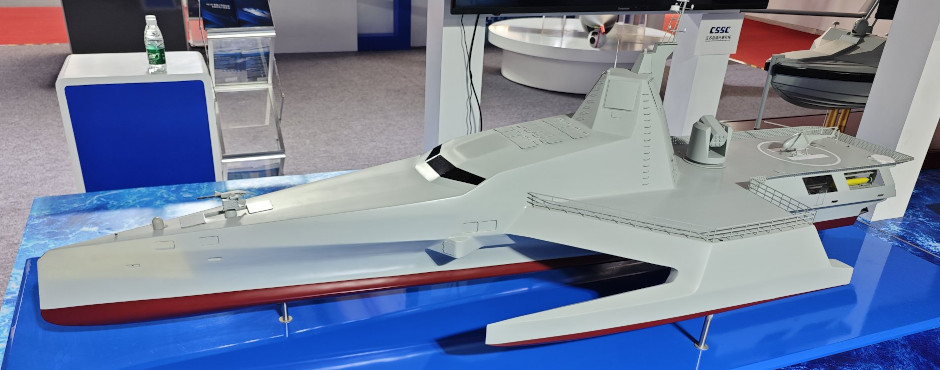
Related articles (Full index of popular Covert Shores articles)

 Chinese Navy's Advanced Submarine Type-039C Yuan Class. w/Cutaway
Chinese Navy's Advanced Submarine Type-039C Yuan Class. w/Cutaway

 Ukraine's long-ranged attack drones (OWA-UAVs)
Ukraine's long-ranged attack drones (OWA-UAVs)


 maritime drones (USVs) of the Russo-Ukraine War.
maritime drones (USVs) of the Russo-Ukraine War.
